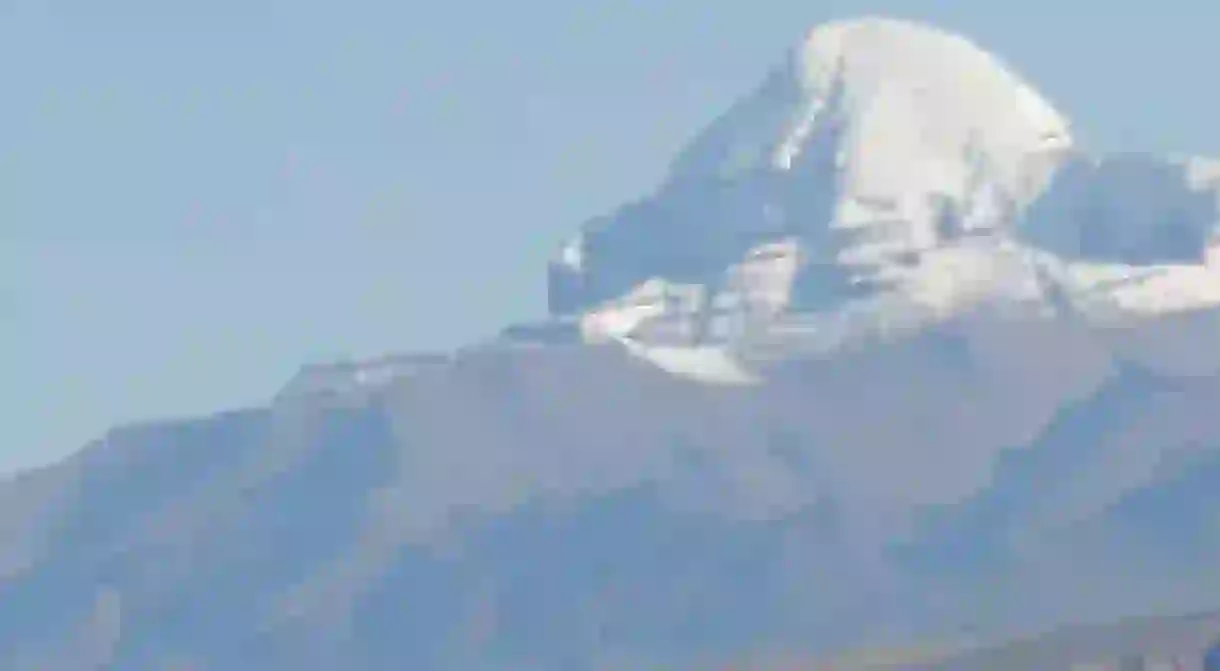Mount Kailas: Tibet's Divine Spectacle

Mount Kailas, also known as Kailash or Gang Rinpoche is one of the most sacred mountain peaks of the World, located in the Kailash Range, Transhimalaya in Tibet, scaling an elevation of 21,778 ft. The sanctity and purity of the Mount is enhanced by the fact that though it has been studied for more than a century now, nobody has actually been able to trek up the mount. It is one of the rare still unclimbed mountain peaks.

A mountain peak that serves the faiths of four worldwide religions: Hinduism, Buddhism, Jainism and Bön, Kailash stands as the source for spiritual power and awakening of the soul. ‘For the Hindus, it is the home of the mountain god Shiva and a symbol of his power symbol om; for Jains it is where their first leader was enlightened; for Buddhists, the navel of the universe; and for adherents of Bon, the abode of the sky goddess Sipaimen.’

Reaching Kailash is not impossible, but it is remarkably challenging. As more and more pilgrims pave their way towards the untouched land, the Chinese government aides them by lifting certain land restrictions and making space for the faith of holy men. There are various paths you can choose to reach Darchen, the beginning point of Kora, which is the 32 mile long preregrination of Mount Kailash. From Kathmandu, take an aerial way or a road journey or even a trekway to reach the base camp of Kailash. The circumambulation, however, has to be done only by foot which takes a minimum of 4-5 days. Nowadays, you can easily plan for trip to Kailash with one of the many tour and travel agents who provide different budget packages.

Beside Kailash are two natural, freshwater lakes, named Mansarovar and Rakshastal. A dip in Mansarovar or the Lake of Consciousness and Enlightenment is as sacred of a ritual as climbing Kailash itself; whereas it is prohibited to take a dip in Rakshastal as it is the Lake of Demons. Kailash is also surrounded by the sources of four major rivers of Asia: the Indus River, the Sutlej River (a major tributary of the Indus River), the Brahmaputra River, and the Karnali River (a tributary of the River Ganga). The presence of so many waterways greatly contributes to the amount of attention paid to this peak, that sits in the center.

Besides the religious and the aesthetic significance is the strong spiritual attraction of this Mount and its surroundings. For those who’ve been to this untouched land, it has been a journey of transformation from ignorance to awakening, from narcissism to compassion, from despair to satiation. Along with a physical expedition, it serves as an inner journey where, away from worldly distractions, travelers and pilgrims can dwell with introspection and engage with the real self. In such an exercise on such a journey, the realization of the self emerges as a life changing moment for the being. For such a spiritual engagement, faith is a rudimentary pre-requisite. By Radhika Sharma













